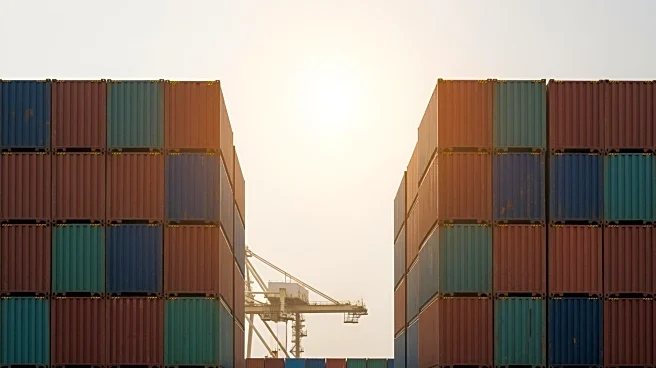What's Happening?
China has unveiled its 15th five-year plan, focusing on technological self-reliance, industrial modernization, and expanded domestic demand. The plan aims to deliver 'high-quality development' by upgrading
manufacturing, automating industries, and fostering emerging sectors like aerospace and quantum computing. Despite sluggish domestic growth and geopolitical tensions, China is doubling down on a state-led model to secure its future. The plan also emphasizes military-civil fusion, integrating civilian innovation with military needs, and aims to insulate China from export controls by indigenizing critical technologies.
Why It's Important?
China's focus on self-reliance and tech innovation could reshape global supply chains and standards, intensifying competition with advanced economies. The plan's emphasis on high-tech industries may lead to increased Chinese exports, affecting global markets and potentially straining international economic relations. While the plan aims to boost China's technological prowess, it risks neglecting domestic demand, which remains weak. Economists have urged China to shift towards a consumption-driven growth model, but the plan prioritizes industrial upgrading over consumer spending.
What's Next?
China's new plan may lead to increased global competition, particularly in high-tech sectors. The U.S. and Europe may respond by reindustrializing to reduce reliance on Chinese supply chains. Domestically, the plan's success will depend on whether it can balance industrial growth with boosting consumer spending. If domestic demand remains weak, China may continue to rely on exports to absorb excess output, potentially exacerbating trade frictions. The plan's long-term success will be judged by its impact on Chinese citizens' incomes and living standards by 2030.
Beyond the Headlines
The plan's focus on military-civil fusion highlights China's strategic approach to national security, integrating technological advancements with defense needs. This approach may lead to increased military capabilities, affecting global security dynamics. Additionally, China's drive for self-reliance reflects a broader trend of countries seeking to reduce dependence on foreign technologies, which could lead to shifts in global trade patterns and alliances.













